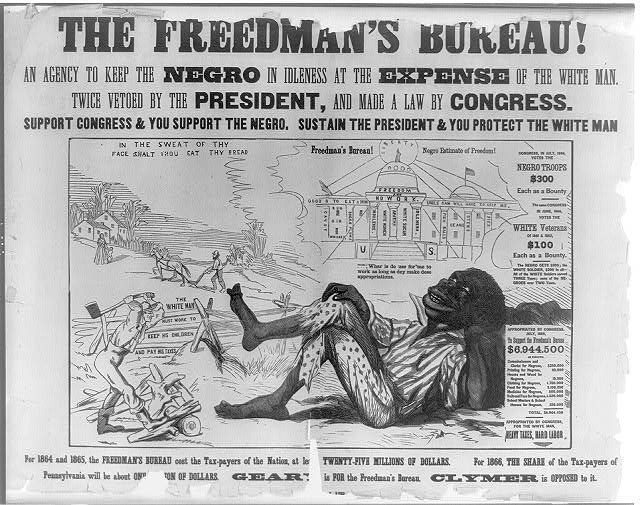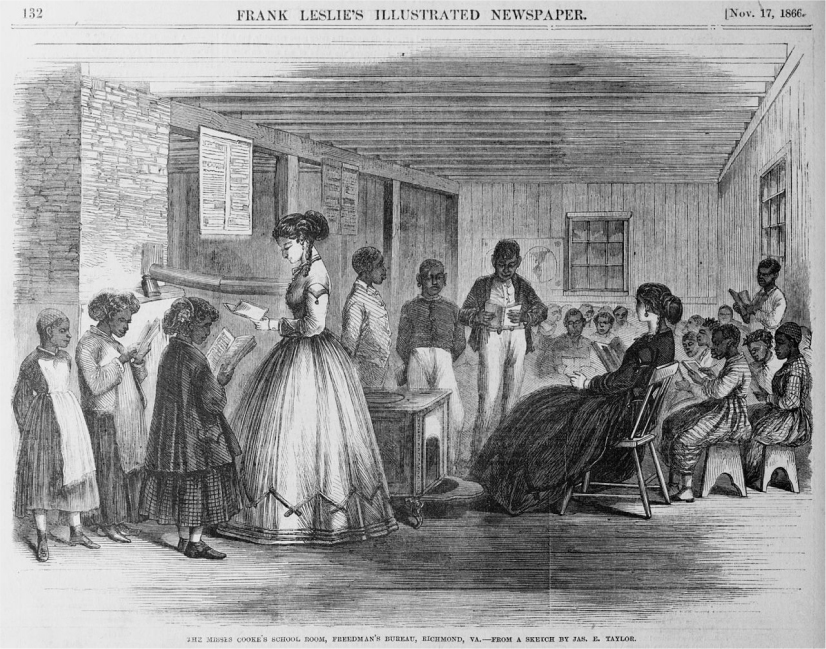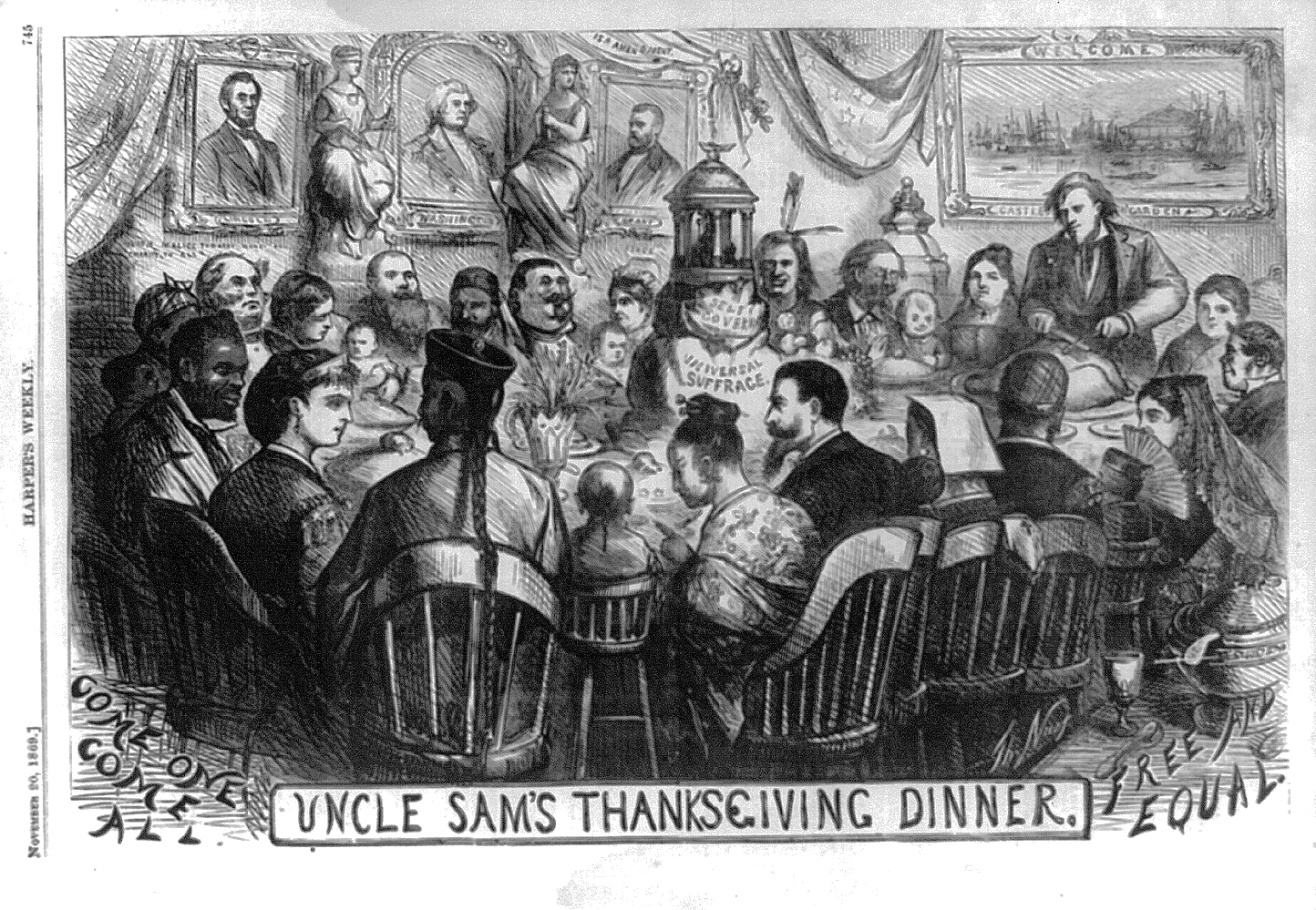Unit 9: Reconstruction Deconstructed DBQ Document Set and Teacher Context
This document provides teacher support for implementing the Unit 9: Reconstruction Deconstructed DBQ in the middle school classroom. It includes seven documents, each designed to help students explore connections to the DBQ question while understanding the relevant historical context.
Use the context in this document to guide your students in making these connections and help them engage with the primary sources effectively. You may choose to provide some or all of the context in this document to your students, depending on your group of learners.
For students who need additional support, you can assign or allow them to choose 3-4 documents. For students who need more of a challenge, provide all seven documents and require them to use each source at least once in their analysis.
Document Exposure Table
This table outlines the places in the unit that students encounter the sources in the Deconstructed DBQ. The table can help you plan for instruction or activate student prior-knowledge before the Deconstructed DBQ.
Teacher note: As students move through the curriculum, they encounter more documents overall, but each one appears fewer times. This gradual decrease in exposure is intentional-it helps shift the responsibility for document analysis to the student, supporting the development of independent thinking and source analysis skills over time.
| Document | New or Repeated Exposure | Unit Resources Using the Document |
| Document A: The Thirteenth Amendment Section 1 (1865) | New* | Reconstruction Interactive Timeline |
| Document B: The Fourteenth Amendment Section 1 (1868) | New* | Reconstruction Interactive Timeline |
| Document C: The Fifteenth Amendment Section 1 (1870) | New* | Reconstruction Interactive Timeline |
| Document D: The Freedmen’s Bureau! (1866) | New | |
| Document E: Classrooms for Black Children (1866) | New | |
| Document F: President Johnson Veto Message of the Civil Rights Act of 1866 | New* | Reconstruction Interactive Timeline |
| Document G: Uncle Sam’s Thanksgiving (1869) | New |
* Items are marked as new because they are mentioned or introduced but not examined in detail.
Instructions
Read and analyze each document in the set. Use the vocabulary to support your understanding and/or take notes as you read. Then, use the graphic organizer to plan your response to the question.
In your response you should:
- Respond to the prompt with a defensible thesis that establishes a line of reasoning.
- Group the sources (documents) based on similarities or connections.
- Analyze the sources (documents) using the VIEW technique.
- Use relevant evidence from the documents to support your thesis and line of reasoning.
- Build context or give the appropriate background information for understanding.
DBQ Question: How successful was Reconstruction in addressing the challenges of rebuilding the nation and ensuring equal rights for African Americans?
Documents
Document A: The Thirteenth Amendment Section 1 (1865)
| Neither slavery nor involuntary servitude, except as a punishment for crime whereof the party shall have been duly convicted, shall exist within the United States, or any place subject to their jurisdiction. | duly convicted- found guilty after legal process
jurisdiction- the official power to make judgements or decisions |
Historical Significance
Passed just months after the Civil War ended, the Thirteenth Amendment marked the beginning of the Reconstruction Era and represented the first constitutional step toward national healing. It legally abolished slavery, signaling the Union’s commitment to justice and a new vision for America grounded in civic virtue and liberty.
Challenge of Rebuilding
Though it ended slavery, the amendment didn’t address how the South would rebuild its economy or how formerly enslaved people would access full citizenship and civil rights.
Ensuring Equal Rights
As the first major constitutional achievement of Reconstruction, the amendment laid the groundwork for future progress by making slavery illegal in all U.S. states and territories.
Document B: The Fourteenth Amendment Section 1 (1868)
| All persons born or naturalized in the United States, and subject to the jurisdiction thereof, are citizens of the United States and of the State wherein they reside. No State shall make or enforce any law which shall abridge the privileges or immunities of citizens of the United States; nor shall any State deprive any person of life, liberty, or property, without due process of law; nor deny to any person within its jurisdiction the equal protection of the laws. | naturalized- to become a citizen through a process
jurisdiction- the official power to make judgements or decisions privileges and immunities-fundamental rights and protections |
Historical Significance
Ratified during the second phase of Reconstruction, this amendment addressed the limitations of emancipation by clearly defining U.S. citizenship and guaranteeing equal protection under the law. It came in response to widespread violence and discrimination against freed people in the South.
Challenge of Rebuilding
Many Southern states resisted early Reconstruction policies and passed Black Codes to limit African Americans’ rights, forcing Congress to act through stronger constitutional means.
Ensuring Equal Rights
The Fourteenth Amendment directly challenged racial inequality by embedding increased protections for justice and equality into the Constitution’s framework-one of Reconstruction’s most critical civic achievements.
Document C: The Fifteenth Amendment Section 1 (1870)
| “The right of citizens of the United States to vote shall not be denied or abridged by the United States or by any State on account of race, color, or previous condition of servitude | abridged- reduced |
Historical Significance
As the final Reconstruction amendment, the Fifteenth Amendment completed a set of three constitutional reforms by granting African American men the right to vote. It reflected a high point in Reconstruction’s vision of inclusive democracy. Together with the Thirteenth and Fourteenth Amendments, the Fifteenth Amendment aimed to achieve justice and a path for active citizenship for newly freed slaves in the South.
Challenge of Rebuilding
Despite its promise, Southern states soon developed new ways-like poll taxes and literacy tests-to suppress Black voting.
Ensuring Equal Rights
The amendment extended civic participation and sought to uphold equality in political life, showing a deep commitment to the ideals of constitutional democracy.
Document D: The Freedmen’s Bureau! (1866)
 |
“The Freedman’s Bureau- An agency to keep the negro in idleness at the expense of the white man. Twice vetoed by the president, and made law by Congress. Support Congress and you support the negro. Sustain the president & you protect the white man.” |
Historical Significance
This cartoon was published during the 1866 elections, in the early stages of Reconstruction, when debates over the Freedmen’s Bureau and civil rights legislation were central. It represents the fierce backlash from white supremacists and President Johnson’s allies to federal attempts at protecting justice and equality.
Challenge of Rebuilding
The cartoon reveals how Reconstruction efforts, especially aid to freedmen, were met with hostility and racist propaganda aimed at halting progress.
Ensuring Equal Rights
The very existence of the Freedmen’s Bureau-and the outrage it sparked-shows how Reconstruction tried to build support systems for African Americans grounded in civic responsibility and moral duty.
Document E: Classrooms for Black Children (1866)
 |
The Misses Cooke’s
school room, Freedman’s Bureau, Richmond, Va. from a sketch by Jas. E. Taylor. |
Historical Significance
Emerging during the first wave of Reconstruction, this image shows how newly established schools were a central part of the federal and local efforts to rebuild society and promote equality. Education became one of the first visible signs of change in the lives of formerly enslaved people.
Challenge of Rebuilding
Organizing schools in the South required overcoming logistical, financial, and political obstacles, as many white Southerners opposed educating Black children.
Ensuring Equal Rights
These classrooms represent a tangible effort toward bringing Black children into American civic life through knowledge and literacy.
Document F: President Johnson Veto Message of the Civil Rights Act of 1866
| Four millions of them have just emerged from slavery into freedom. Can it be reasonably supposed that they possess the requisite qualifications to entitle them to all the privileges and immunities of citizens of the United States? Have the people of the several States expressed such a conviction? It may also be asked whether it is necessary that they should be declared citizens in order that they may be secured in the enjoyment of the civil rights proposed to be conferred by the bill. | requisite- required
privileges and immunities-fundamental rights and protections |
| Those rights are, by Federal as well as State laws, secured to all domiciled aliens and foreigners, even before the completion of the process of naturalization; and it may safely be assumed that the same enactments are sufficient to give like protection and benefits to those for whom this bill provides special legislation. Besides, the policy of the Government from its origin to the present time seems to have been that persons who are strangers to and unfamiliar with our institutions and our laws should pass through a certain probation, at the end of which, before attaining the coveted prize, they must give evidence of their fitness to receive and to exercise the rights of citizens as contemplated by the Constitution of the United States. | Domiciled aliens- people from a foreign country
naturalization- to become a citizen through a process the coveted prize- citizenship |
| The bill in effect proposes a discrimination against large numbers of intelligent, worthy, and patriotic foreigners, and in favor of the Negro, to whom, after long years of bondage, the avenues to freedom and intelligence have just now been suddenly opened. | bondage- enslavement |
| He must of necessity, from his previous unfortunate condition of servitude, be less informed as to the nature and character of our institutions than he who, coming from abroad, has, to some extent at least, familiarized himself with the principles of a Government to which he voluntarily intrusts “life, liberty, and the pursuit of happiness.” | unfortunate condition of servitude- enslavement |
| Yet it is now proposed, by a single legislative enactment, to confer the rights of citizens upon all persons of African descent born within the extended limits of the United States, while persons of foreign birth who make our land their home must undergo a probation of five years, and can only then become citizens upon proof that they are of good moral character, attached to the principles of the Constitution of the United States, and well disposed to the good order and happiness of the same. | legislative enactment- law or act |
Historical Significance
After President Abraham Lincoln’s death, President Andrew Johnson and Congress struggled intensely over the process of Reconstruction. In this message, Johnson attempted to block the Civil Rights Act of 1866 and limit Congressional Reconstruction by opposing the expansion of federal protections for African Americans.
Challenge of Rebuilding
Johnson’s resistance created political gridlock and emboldened opponents of Reconstruction, threatening to derail the early gains of Reconstruction.
Ensuring Equal Rights
Congress overriding the veto with a two-thirds vote was a decisive moment-showing that justice and equality could prevail in our constitutional system despite presidential opposition.
Document G: Uncle Sam’s Thanksgiving (1869)

|
“Come One, Come All”
“Free and Equal” |
Historical Significance
Published during the later years of Reconstruction, this cartoon imagined a future America where all people-regardless of race or nationality-could sit together as equals. It reflected Congressional Republican ideals and a vision of unity built on justice and shared civic values.
Challenge of Rebuilding
Although inspirational, the cartoon stands in contrast to the reality of segregation, violence, and backlash that continued to affect Reconstruction’s progress.
Ensuring Equal Rights
By celebrating diversity around a table, with universal suffrage as the center piece, Nast encourages the viewer to consider the idea that Reconstruction could lay the constitutional and moral foundation for a truly inclusive democracy in the future.
